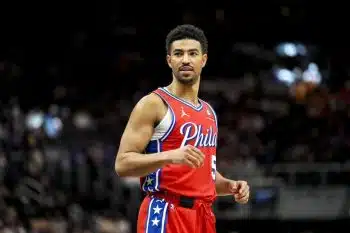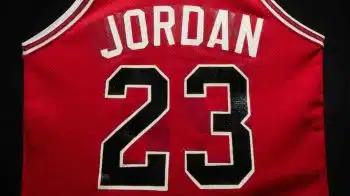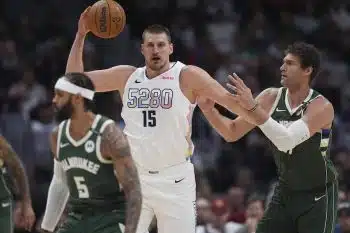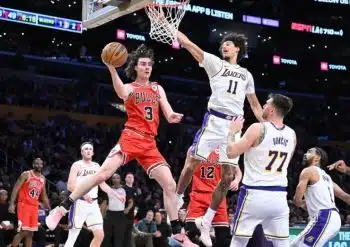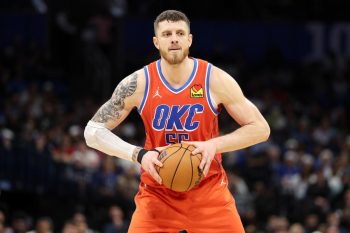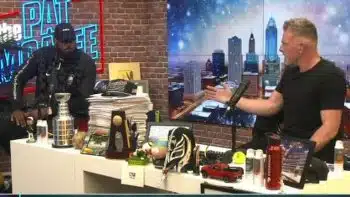NBA
NBA AM: Is Trading Durant Really “Ludicrous”?
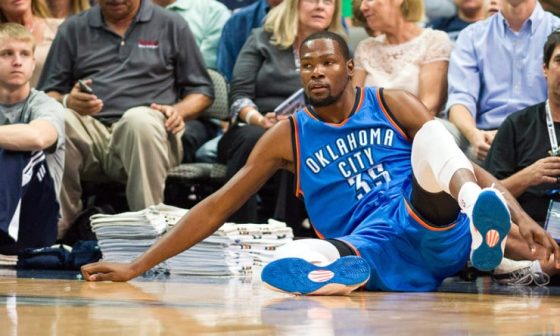
Presti Shoots Down Durant Talk: The power of ESPN to influence the discussion is always amazing. However informed or uninformed, if it runs on ESPN there is a sense among many that what was said is likely to happen or, worse yet, under consideration.
ESPN analyst Tom Penn, a former NBA executive, suggested recently that if Kevin Durant wouldn’t commit to the Oklahoma City Thunder long-term, the team might consider trading him.
It’s not a crazy assertion, because at some point every team has to embrace the fear that a would-be unrestricted free agent can walk away and leave the franchise with nothing. It’s the reason many marquee players ultimately get moved.
However, Durant is very unique in that he is arguably one of the top players in the game and there is almost no scenario in which the Thunder could get anything remotely close to Durant’s value in return in a deal.
Thunder General Manger Sam Presti usually avoids the pitch in the dirt, but because it was from a somewhat credible voice, Presti did address the notion of trading Durant and dismissed it with a heavy hand before last night’s game.
“It’s ludicrous to assert that we would trade Kevin,” Presti told Anthony Slater of The Oklahoman. “There’s no way to measure what he represents to our organization on and off the floor. He has helped build this organization from the ground up and personifies the Thunder: past, present and future. When he’s done playing there will be streets named after him throughout the state and younger generations of Oklahomans will learn about the role Kevin has played in elevating this community in ways beyond basketball.”
While those are certainly aggressive and poetic notions, there is a reality that Durant can make his own decision and has not informed the Thunder one way or the other what his thinking about the long-term is.
The Thunder’s stance is they will give him every nickel they possibly can for as long as Durant will take them. There is no doubt that the Thunder intend to do whatever it takes to retain Durant beyond his current deal.
The good news for the Thunder is Durant doesn’t necessarily crave the spotlight of a bigger city. There was talk around All-Star Weekend that New York Knicks forward Carmelo Anthony and Durant were seen together and that Anthony may have been applying the soft-sell on Durant. There is no doubting that recruiting by other marquee players is going to be a big part of Durant’s life for the next 477 days.
As for Durant, he has said countless times that he really enjoys what OKC has been for him and his family. He likes living in Oklahoma City, admitting that the offseason is long enough for him to return home to Baltimore and Washington D.C. or to experience larger markets like Los Angeles or New York.
Durant hasn’t had a problem securing endorsement deals, despite being in one of the smallest NBA media markets. He is one of the top earners in the NBA and has more commercials than any other player. In the last two years, he has inked more than $500 million worth of endorsement deals including a Nike deal said to eclipse the $300 million mark, which included a sizable upfront payment to the tune of $250 million. Money will be the least important factor in Durant’s free agent equation.
The wrinkle for the Thunder is Durant’s representation with RocNation. They are not a typical sports agency and they have gone about handling Durant is a very different way, which has yielded some out-of-the-box endorsement and business deals that have favored Durant.
There is a sense among NBA insiders that as long as the Thunder are competing and challenging for a championship, Kevin wants to remain in Oklahoma City long-term. However, there is also a belief that if the Thunder are not in the hunt, the voices in the equation that may want Durant elsewhere may have the means to sway him if he’s not playing deep into the postseason not only this year but next.
The Thunder for the first time are going to be luxury-tax payers. For the first time in a long time, they traded a first-round draft pick – usually considered gold to the Thunder – in order to land Dion Waiters in a trade earlier this year.
Everyone involved in the equation understands that setting the stage with the best path to a championship in OKC is a vital part of the free-agent pitch to Durant.
One league executive was asked recently about the idea of trading Durant; the comment back was that no one believes Presti would ever trade Durant. If Durant walks, the defense is always “he left us, we never left him” and that’s likely a smart stance to take considering that any trade for Durant would be pennies on the dollar at best and the Thunder still have 477 days to make their case as a contender.
NBA Acknowledges Players Won’t Agree: During the All-Star break in February, the National Basketball Players Association announced that it declined the NBA’s proposal to “smooth” out the massive increases in the salary cap that are expected as a result of the NBA’s new TV rights deal.
Conservative estimates peg the jump in the cap in 2016 to go from an estimated $67.4 million next to year to somewhere between $78 and $85 million.
The NBA’s plan was hinged on the notion that the players are contractually obligated to receive 51.4 percent of revenue, and that in setting a lower cap number, any shortfall from what’s paid in salary and benefits in a lower cap environment would be paid to the NBPA in a lump sum at the end of the season and the NBPA can disperse that to its players however it sees fit.
The NBPA passed.
There are a couple of things to note about the plan. First, not every team in the NBA is flush with cash; some teams have very tight restrictions on how much they are permitted to spend and while there is a lot of money coming into the NBA as a result of the new rights deal, until that cash actually comes in some teams may not be able to meet an $80 million team salary on their existing revenue streams alone.
The notion of “smoothing” is that it allows the NBA and its team to pay a large chunk of the money after the season, after that new TV money is paid to them, removing the undue burden on owners to either self-fund the first year of the cap jump or to finance it through lines of credit.
While many of the NBA’s owners are billionaires, they are also part of complex ownership structures that makes floating a few million here or there a little challenging and complicated. NBA teams are not sole proprietor arrangements, they are complicated partnership structures.
The other idea in smoothing is it would be a means for every player to gain from the new jump in the cap environment since the NBPA could disburse money to everyone, including rookie-scale players who likely won’t see benefits from the new cap environment for years.
So why would the Players Association pass on such a plan?
One reason is that there is a sense of, “Why help the owners?” The NBPA feels like they have made so many concessions in the owners’ favor that there is no need to give even more, not with franchise values soaring and revenues flowing in.
The belief is that with such a large number of players hitting free agency and those players having structured deals around the projected salary cap jump, those players and the ones to follow should be able to maximize their earning against the formula agreed to.
This sort of comes down to money earned now, versus money earned or paid later.
Take LeBron James, for instance – he will be eligible for 35 percent of the salary cap. If the cap were artificially suppressed to say $75 million, that’s a first year salary of $26.25 million. If the actual cap comes in at $85 million, his first year balloons to $29.75 million. The belief is James is owed that $3 million and should be paid it, as should every player eligible for free agency.
There are a few flaws in the process.
There are currently eight NBA teams operating below the current $63.065 million salary cap – some by design as they have young teams and do not need to spend at this point.
There are currently five teams over the $76.82 million luxury tax line, with the average payroll across the 30 NBA teams being $69.595 million.
While some teams may immediately embrace the new higher spending ceilings and spend to the new lines, there are a large number of teams that either won’t spend or don’t need to spend at those levels, especially if it means financing the new expense.
Whether the players want smoothing or not, if NBA teams don’t meet the 51.4 percent required by their contract, the shortfall will be paid in a lump sum at season’s end regardless. By not agreeing to cap the process, the NBPA is allowing for the free agents in 2016 to consume more of the pie with the likely understanding that the balance can then be split among the other players.
Maybe that’s the best of both worlds, knowing full well some teams won’t spend and there will be something of a shortfall check to share with those who are not free agents.
Is that smart? The NBPA has been showing its teeth on a number of issues in advance of an expected labor fight in 2017. Wouldn’t giving every player a sizable check have been smarter politics? They could have issued that check with a note saying, “Put this away, we’re going to win our labor fight.”
Like many things with the new leadership at the NBPA, there doesn’t seem to be an understanding of what’s coming; rather they are taking a “just say no” stance.
The players are getting their money, whether it’s issued as a contract or paid as a shortfall payment. The players as a group will get every nickel of the 51.4 percent they are owed.
There was a window for compromise that could have led to many things. Some agents close to the process saw the “smoothing” issue as a means to reach a new labor deal. This is the first time in a very long time that the players have had something the owners wanted and there could have been room to make a better deal as a result and avoid a nasty labor fight altogether.
Unfortunately, the NBPA’s stance is one of defiance and dissent and that historically has never worked in previous fights. It may be a popular stance to take among players who feel the labor deal has wronged them in some way, but let’s keep a couple of concepts in perspective. Michael Jordan is considered the greatest player to have played in the modern era and he earned $90.235 million in salary in his NBA career. Kobe Bryant and Kevin Garnett have both crossed the $300 million mark in career earnings.
Hard to make the argument that the system in the NBA is that broken. Could they have earned more? Maybe and that seems to be the NBPA’s stance, that passing on smoothing could allow individual players to earn more now. But it may not work out quite as expected.
More Twitter: Make sure you are following all of our guys on Twitter to ensure you are getting the very latest from our team: @stevekylerNBA, @AlexKennedyNBA, @LangGreene, @EricPincus, @joelbrigham, @SusanBible @TommyBeer, @JabariDavisNBA , @NateDuncanNBA , @MokeHamilton , @JCameratoNBA, @iamdpick, @jblancartenba, @johnzitzler, @CodyTaylorNBA, @MaryStevensNBA and @YannisNBA.
